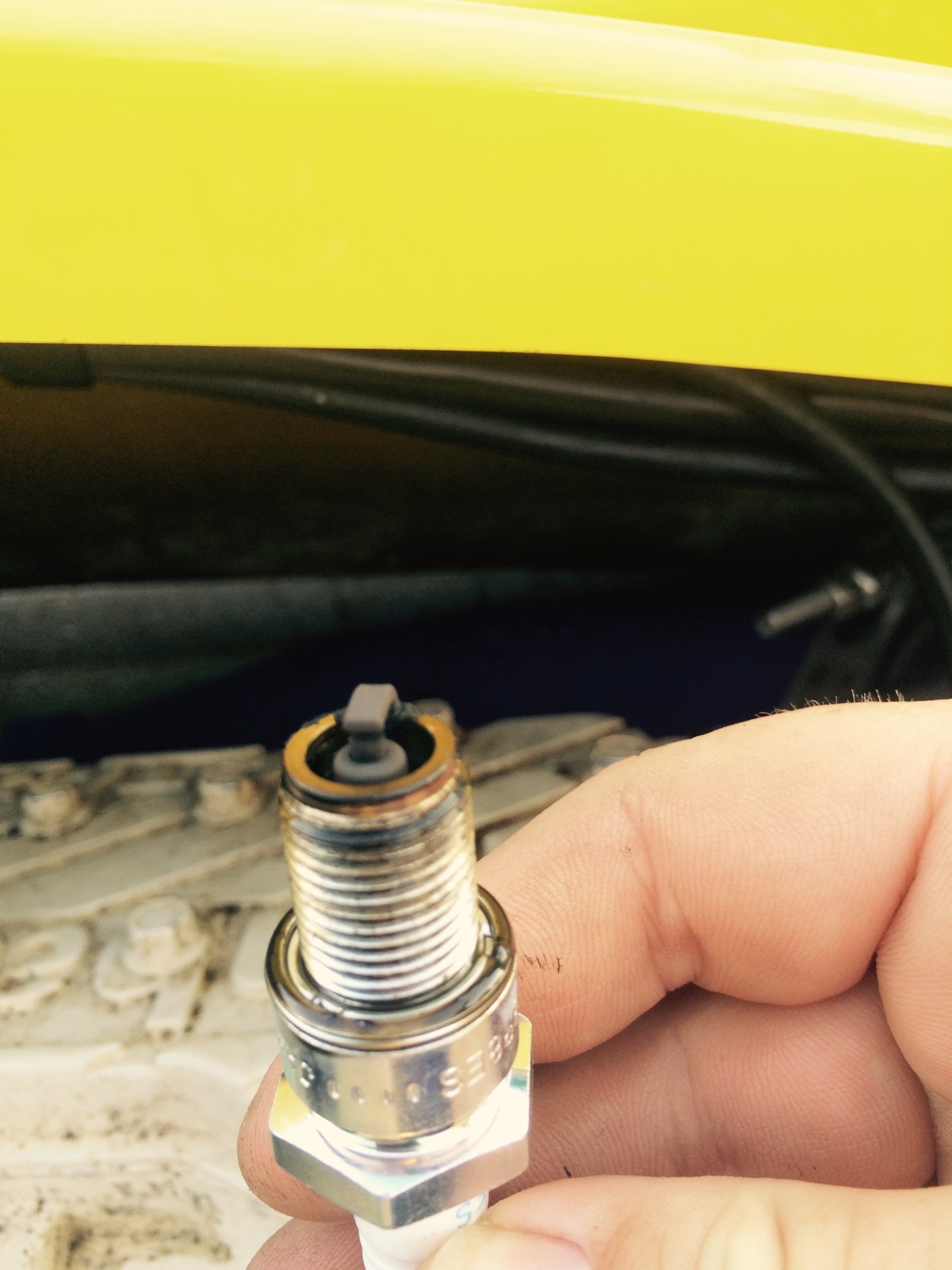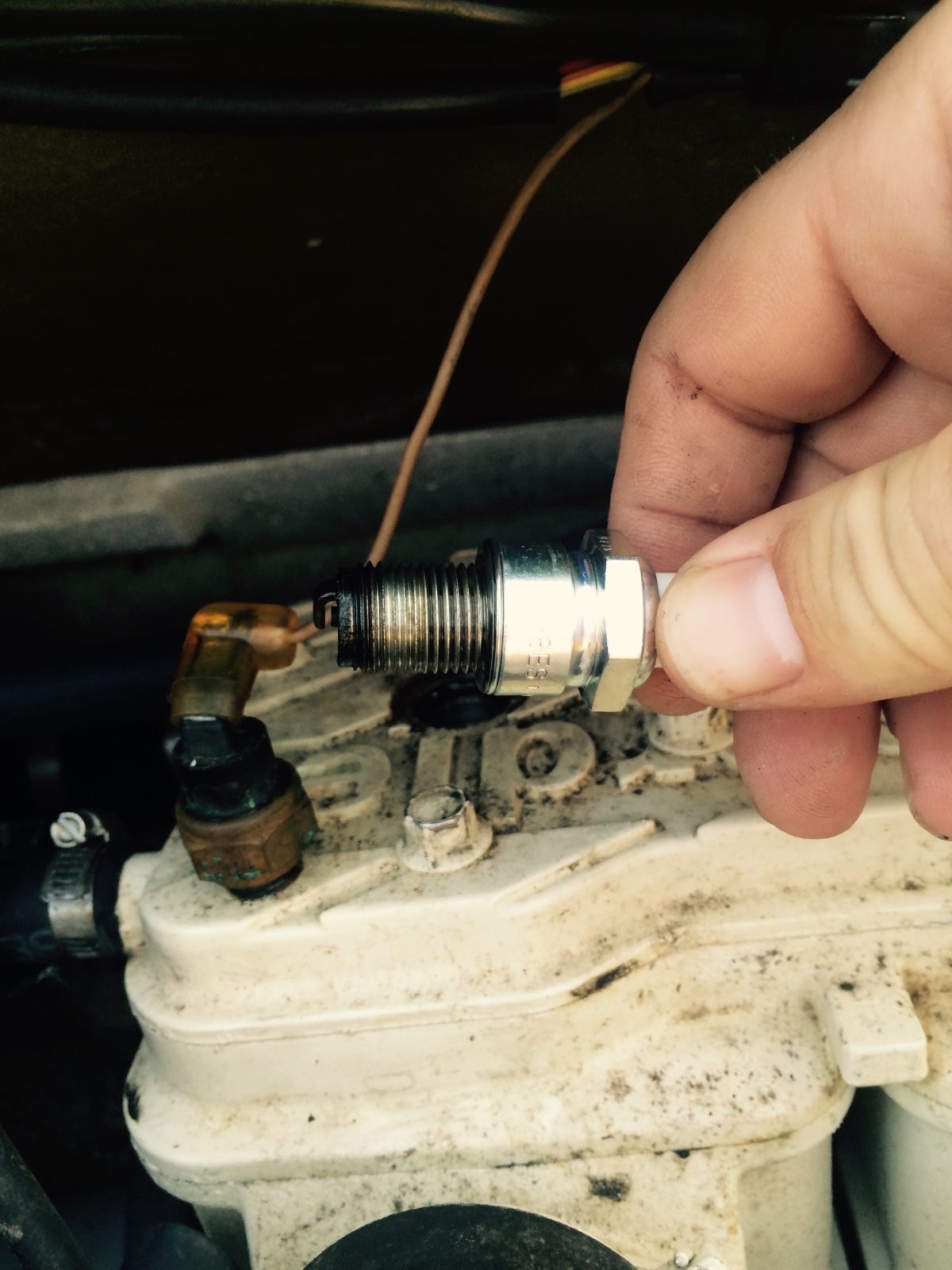The first two pics are the same plug(front of machine) the second two are the same plug(rear of machine). This is my first 787 so that's why I'm asking. Also which plug looks lean?
I could talk your ear off about tuning 2-stroke carbs, lol.....
The first and third photo aren't helping a whole bunch.
The second photo would be perfect anglw if the plug was rotated 90 degrees so I can see the whole ground strap but I can see the center electrode ceramic insulator is grey and that's too lean (for any amount of running) IMO. Grey makes me think of aluminum b/c every two stroke I've roasted had a grey plug and yes, this happens when I tune for power and get it too lean. They run like stink when lean but they will roast so there's a fine line. Better to be plenty rich but not do rich you've got fouling and 4-stroking under load (4-stroking without load is a good sign, especially WOT with no rev limiter a properly tuned carb should 4-stroke the cylinder instead of rev out past red line. 4-stroking used to be our rev limiter for bikes, FWIW, remember the wing, ding, ding, ding sound in the expansion pipe and 4-stroking rev at the start line wind up that cleared out as the rope fell and clutch engaged?).
Is the 2nd photo the fouled plug, or is the fouled plug the 4th photo? (Let's assume one isn't firing so pull one plug wire with engine running in water to find the fouled plug. If motor stops you just shut down the good cylinder (only one is firing) so the other one is fouled, pulling a wire and no change means that plug isn't firing.
The last photo could use a little more angle so we can see the center electrode ceramic insulator, I can see the whole ground strap looks good I can barely see the center electrode but seems to be yellow, which is how my new plugs look after 15 minutes. Then they progressivly turn cardboard brown from the low ash oil film as they stabilize.
A stabilized plug should look like this photo but one that has 15 minutes on it should have a yellow tinge to the center electrode. Notice the ground strap changes color about at the bend, more heat pushes the color band further into the bend. Photo angle isn't perfect either, for viewing the ground strap color change but pretty decent.
http://www.seadoosource.com/sparkpluginfo.html
So the yellow -> brown color is from oil film depositing on the center ceramic insulator and when temp gets too high the color becomes grey (or is it aluminum joining the party on the center insulator?)
I suppose it's possible to clean the outside of carbs without disassembling them but no way to clean the inside correctly without disassembly. May as well toss a new needle/seat in while in there if more than a few years old, a carb isn't fresh rebuilt without a new n/s, IMO.
Turn up the fuel on that one cylinder that's lean but if it's hesitating at all or losing speed in WOT or the plug remains grey those carbs MUST come off.
Every 2-stroke will eventually seize if not rebuilt before it happens, rebuilds are part of regular maintenance and performing a compression check is one way of getting a feel for when that day has arrived.









